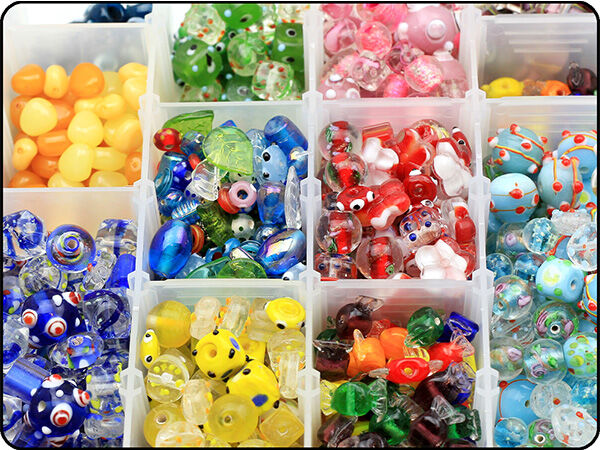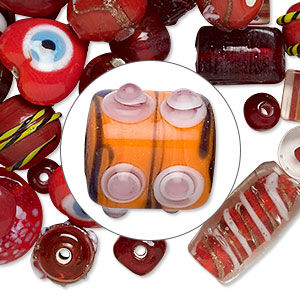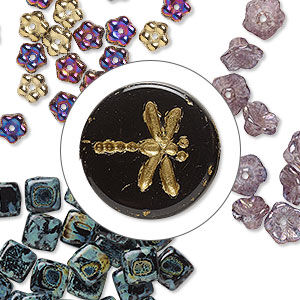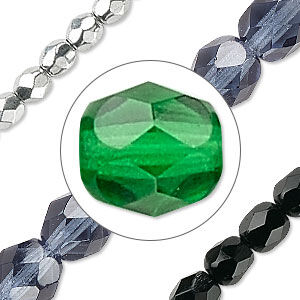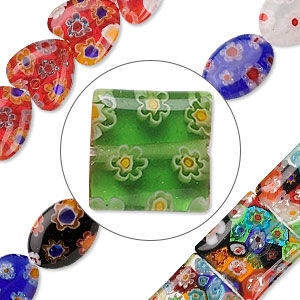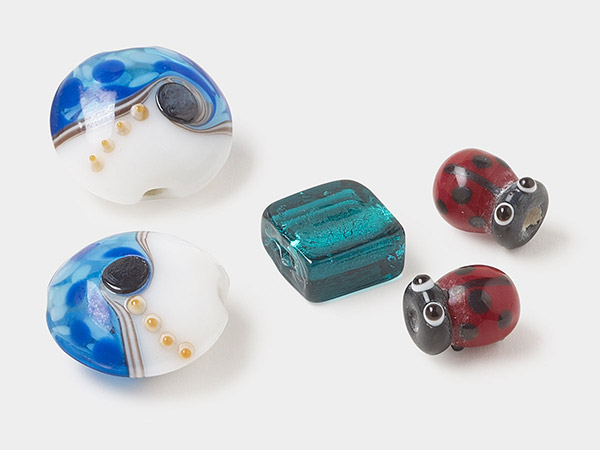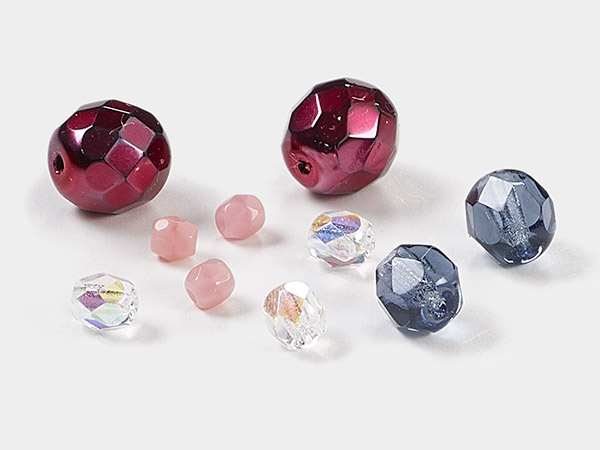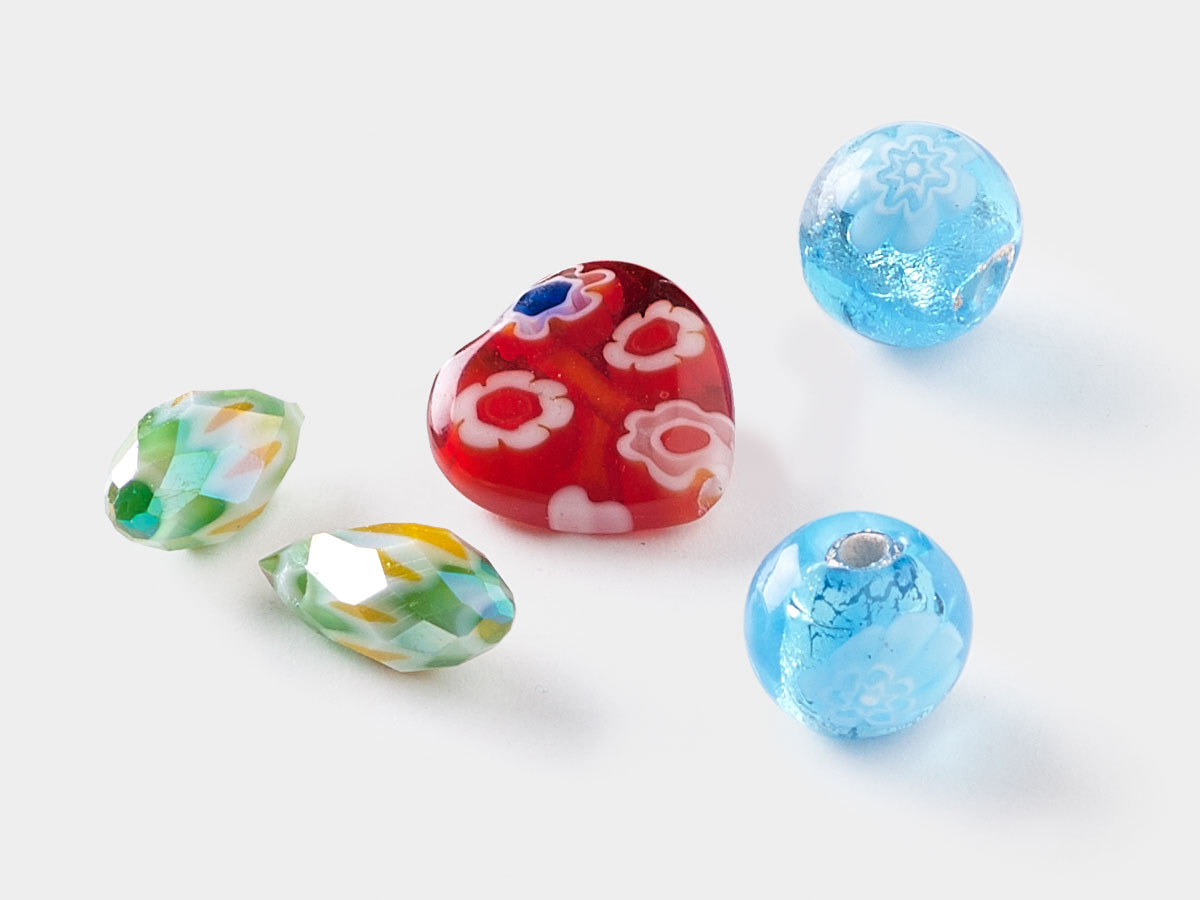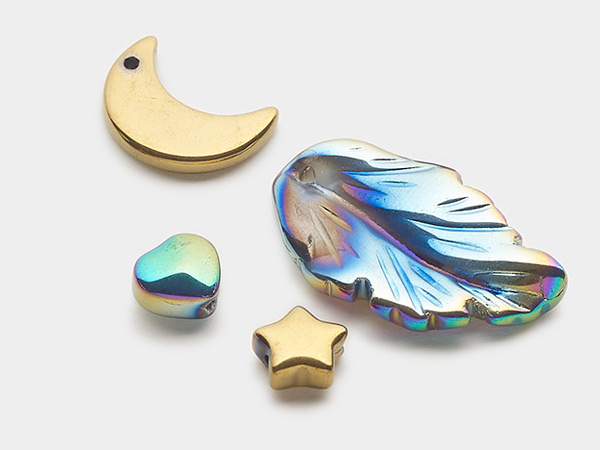How Glass Beads are Made
Glass Bead History
Glass beads have been favorite jewelry-making supplies since their creation thousands of years ago. Modern glass beads are often formed in incredibly similar ways to original glass beads. In ancient Mesopotamia, ''core-forming'' was used with a metal mandrel that held glass over a flame. As the glass softened, it could be wrapped around the mandrel to form the desired shape and details. With the invention of the blowpipe, different glass beads could be created, such as seed beads and special glass beads called Rosetta, star or—more commonly known as—chevron beads. These were originally made in Venice and Murano, Italy.
The main component of glass is silica (sand quartz), lime and soda or potash. Different minerals like iron (blues and greens), manganese (black) and gold (pinks, reds and purples) are added to the basic ingredients to create colors. Adding calcium or tin makes the colors opaque.
Glass beads are one of the most popular and diverse types of bead on the market. They all have different names and production methods. Here's how the most popular glass bead styles are created.
Lampwork Beads (Hand-Wound)
Lampworked glass beads follow a process that can be made by a home artisan.
Some of the basic tools are a torch (or lamp flame that runs on propane) and steel rods coated with kaolin (a clay-like substance) called the bead release. The bead release enables you to take the glass bead off the steel rod after it's formed. Sometimes when you buy lampwork glass beads, you'll find a powdery substance in the bag or on the bead, which is residue from the bead release. This is fairly easily removed with water.
The glass is heated to a molten, taffy-like state and wound onto the coated rod. The glass is heat-worked with hand tools into the desired shape. While the bead is steadily turned over the flame, fine filaments of glass (called "stringers") are used to "paint" the glass bead with designs and textures. After cooling slowly in a kiln, the bead is removed from the wire rod that forms the bead hole.
Cane Beads (Drawn Hollow)
Cane beads are difficult to make, using a hollow pipe that collects a "gather" (molten ball) of glass. The bead maker blows down the pipe to form a bubble in the ball of molten glass. The colors or patterns are added to the glass, and the hot glass is stretched (or drawn out). The bubble inside is elongated, and the glass forms a long tube with a hole running throughout its length. The softened glass tube is drawn out to the desired thickness and then cut into sections. The rough edges of the cuts are ground by hand or smoothed by tumbling in sand to finish the beads.
Pressed Beads (Molded Beads)
Pressed beads were made famous by the Czech Republic. Those Czech glass beads were originally created in small factories, which added to their charm. Learn more about these original Czech glass bead factories here. Today, Czech glass is primarily produced by the renowned manufacturer Preciosa.
Pressed glass beads are made by using hinged steel molds mounted on machinery or tongs. The mold has a prong or wire in it to form the bead hole. The mold is squeezed over the hot glass, and when released, the excess glass from the edges is ground away by hand or by tumbling. This process is used for creating complex shapes such as leaves, flowers, animals and more.
Fire-Polished Glass
Speaking of Czech glass, fire-polished glass originated in the Czech Republic in an attempt to imitate the appearance of cut gemstones. Melted glass is molded into the desired shape (usually round), then faceted and fired again. The re-heating process polishes the surface and creates the standard softened edges and subtle shimmer of fire-polished glass. Some fire-polished glass beads go on to receive additional finishes and coatings that may mask the inner shimmer, but showcase the machine-made facets.
Millefiori Glass
A famous, highly sought-after type of glass is called millefiori, which translates to ''a thousand flowers'' in Italian. Labor-intensive millefiori glass beads take a great amount of skill to make, and the process has changed very little since its first creation in Italy. On one end of a steel pole, a blob of glass is dipped into various glass mixtures or has strands of glass adhered to it. With each dipping or adhesion, the colors create a pattern, causing the glob to grow in size and complexity. Once the complexity and design the artist wants has been reached, the built-up globule of glass is placed in a mold to give it shape, stretched into a tubular cane if need be and then cut to reveal flowery or geometric cross-sections. Depending on the desired result, sometimes the shape is encased in clear glass to make the edges smooth. These canes can be given a hole and used as is, although they are commonly grouped and fused together in various other shapes such as hearts, squares and more dotted with flowers.
Have a question regarding this project? Email Customer Service.
Copyright Permissions
All works of authorship (articles, videos, tutorials and other creative works) are from the Fire Mountain Gems and Beads® Collection, and permission to copy is granted for non-commercial educational purposes only. All other reproduction requires written permission. For more information, please email copyrightpermission@firemtn.com.
